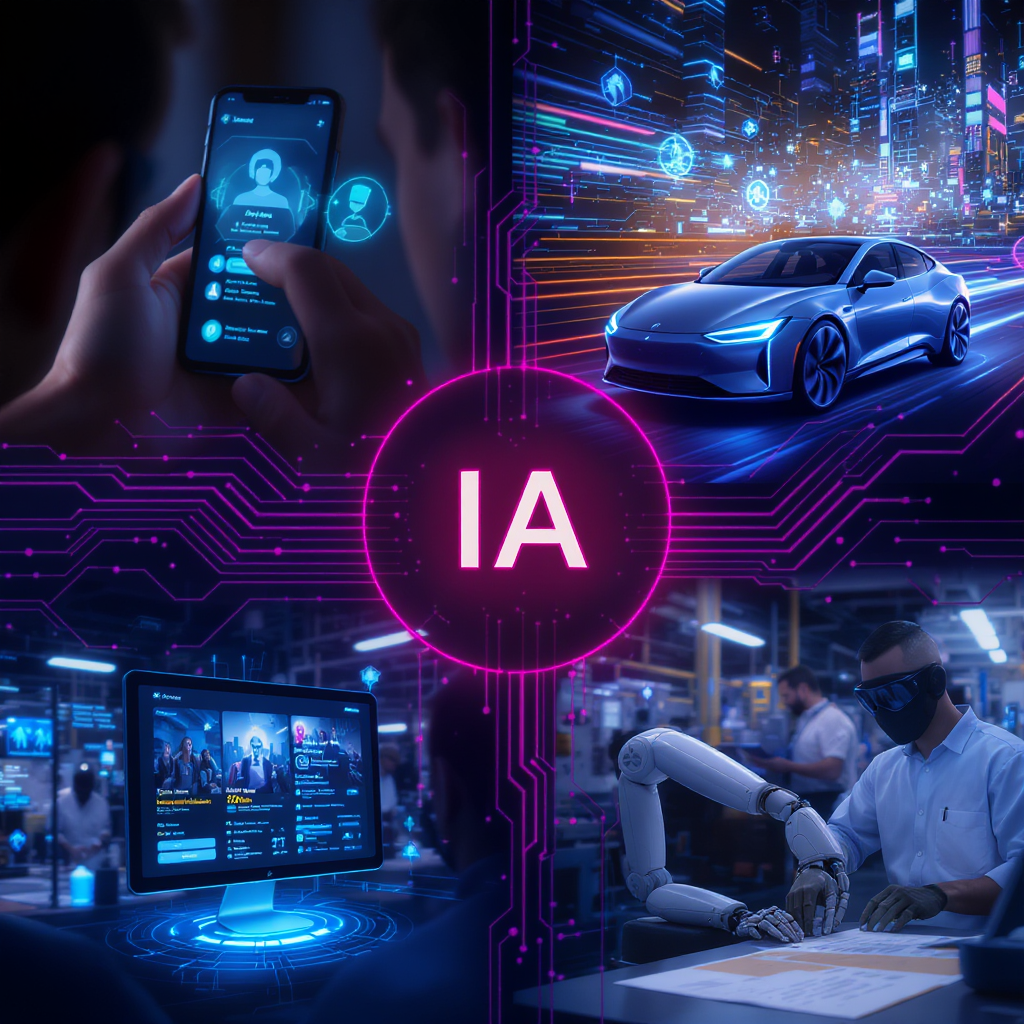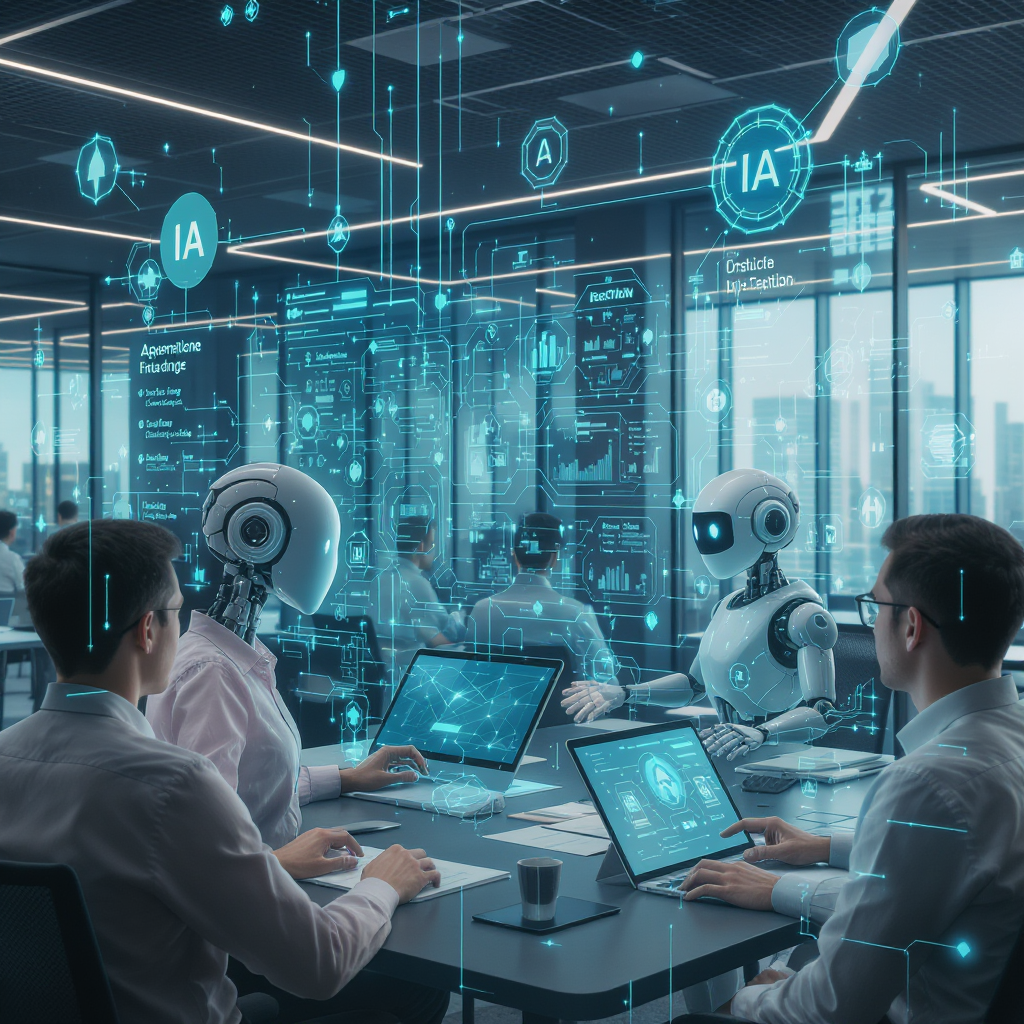Demystifying Artificial Intelligence
The Present and Future Impact on Business and Society.
What is Artificial Intelligence, Really?
Artificial Intelligence (AI) is no longer solely the stuff of science fiction. It's a branch of computer science dedicated to creating systems capable of performing tasks that typically require human intelligence. This includes learning, reasoning, problem-solving, perception, language comprehension, and decision-making.
Globally, it can be classified into several types, but two main categories stand out for their current and future relevance:
Narrow or Weak AI (ANI)
Systems designed and trained for a particular task (e.g., virtual assistants, facial recognition software, recommendation engines). This is the type of AI that surrounds us today and powers countless applications.
General AI (AGI)
A type of AI (still hypothetical) that would possess the ability to understand, learn, and apply knowledge across a broad range of tasks at the same cognitive level as a human. It remains an active field of research and the grand horizon of AI.
The Technological Pillars of AI
For AI to reach its capabilities, it relies on fundamental technological pillars that make it possible. These are the engines driving its development:
Machine Learning (ML)
Machine Learning: Enables systems to learn and improve from experience without explicit programming. Algorithms build models from data to make predictions or decisions. Examples: recommendation systems, fraud detection.
Key Types and Concepts:
- Supervised Learning: Trains models with labeled data (e.g., classification, regression).
- Unsupervised Learning: Discovers patterns in unlabeled data (e.g., clustering, dimensionality reduction).
- Reinforcement Learning: AI learns through interaction with an environment, maximizing rewards.
- Overfitting and Underfitting: Common challenges where the model is too complex or too simple for the data.
- Tools: Libraries like Scikit-learn, TensorFlow, PyTorch are fundamental for implementing ML algorithms.
Deep Learning (DL)
Deep Learning: A subcategory of ML that uses artificial neural networks with multiple layers to model complex abstractions in data. Inspired by the human brain, it's powerful for image and voice recognition and forms the basis of the most advanced AI.
Key Elements and Architectures:
- Neural Networks: Structures with layers of interconnected nodes ("neurons") to learn patterns.
- Convolutional Neural Networks (CNNs): Ideal for image and video processing (e.g., facial recognition).
- Recurrent Neural Networks (RNNs/LSTMs): Designed for sequential data like text and time series (e.g., machine translation).
- Transfer Learning: Reusing pre-trained models for new tasks with less data and time.
- Frameworks: Tools like TensorFlow and PyTorch are essential for building and training DL models.
Natural Language Processing (NLP)
Natural Language Processing: Interaction between computers and human language. It enables machines to understand, interpret, and generate text/voice. Key in virtual assistants, translators, and sentiment analysis.
Key Tools and Concepts (LLMs):
- Large Language Models (LLMs): Models like GPT, Claude, Gemini, and LLaMA/Mistral. They understand, generate, and reason with text.
- Hugging Face Ecosystem: Essential platform for accessing, training, and deploying LLMs and datasets.
- Orchestration Frameworks: Libraries like LangChain and LlamaIndex for building complex applications with LLMs and integrating external data.
- Essential Techniques: Prompt Engineering (instruction design) and RAG (Retrieval-Augmented Generation) for precise answers with external information.
Reinforcement Learning (RL)
Reinforcement Learning: An ML paradigm where an agent learns to make optimal decisions in an environment to maximize a reward. It operates through trial and error, receiving 'reinforcement' for correct actions. Fundamental in robotics, games (e.g., AlphaGo), and optimization.
Key Elements and Concepts:
- Agent and Environment: The agent interacts with its environment, performs actions, and receives states and rewards.
- Reward and Policy: The goal is to maximize the accumulated reward through a "policy" (action strategy).
- Exploration vs. Exploitation: Balance between trying new actions (exploration) and using those already known to yield good rewards (exploitation).
- Model-Free vs. Model-Based: Approaches to learning; one without knowing the environment, and another by building an internal model (like World Models).
- Algorithms: Include Q-Learning, SARSA, and gradient-based methods like Policy Gradients or Actor-Critic.
World Models (World Models)
World Models: Internal representations that an AI builds of its environment. They allow AI to simulate, predict, and plan actions, improving learning efficiency and reasoning without constant real interaction.
Key Concepts and Applications:
- Components: Include dynamics models (how the environment evolves) and observation models (how it's perceived).
- Benefits: Reduce the need for real interactions (sampling efficiency) and enable advanced action planning.
- Primary Use: Fundamental in Model-Based Reinforcement Learning (MBRL) for robotics, autonomous driving, and games.
- Featured Example: Architectures like Dreamer (Google DeepMind) use latent world models to learn efficient policies.
AI in Our Daily Lives: Closer Than You Think
AI is already deeply integrated into our lives, often in ways we don't even notice, simplifying tasks, personalizing experiences, and optimizing services:

- Virtual Assistants: Siri, Alexa, Google Assistant use NLP to understand your voice commands.
- Social Networks: AI algorithms personalize your news feed and suggest relevant connections.
- Search Engines: Google uses AI to provide you with the most relevant and fastest results.
- Content Recommendations: Netflix, Spotify, Amazon use AI to suggest what to watch, listen to, or buy.
- Spam Filters: Your email uses AI to effectively identify and filter unwanted messages.
- Navigation and Maps: Apps like Waze or Google Maps use AI to calculate the best routes in real-time.
Current and Projected Impact on Business
For businesses, AI is shifting from an option to a competitive necessity. Its impact is felt on multiple fronts, transforming operations and opening new avenues for growth:
The rapid advancement of AI and its widespread adoption is due, in part, to the democratization of technology. Platforms like Hugging Face have played a crucial role. Hugging Face can be understood as the "GitHub of AI": a community and platform that hosts a vast repository of pre-trained models (especially for NLP and Computer Vision), datasets, and tools that enable developers and businesses to build and deploy AI solutions much more efficiently and accessibly. This has accelerated innovation and AI integration across various sectors.
- Operational Efficiency: Automation of repetitive tasks, supply chain optimization, predictive maintenance.
- Improved Decision-Making: Analysis of large volumes of data to gain predictive and prescriptive insights.
- Personalization at Scale: Hyper-personalized customer experiences, targeted marketing, bespoke product development.
- New Business Models: Creation of innovative products and services based on AI capabilities.
- Enhanced Cybersecurity: Proactive threat detection and automated incident response.
The global AI market is experiencing exponential growth and is expected to continue this trajectory, transforming entire industries, from healthcare and finance to entertainment and manufacturing.
The Inevitable Debate: AI and the Future of Employment
One of the most discussed topics surrounding AI is its impact on the job market. It's undeniable that AI-driven automation is transforming roles and tasks traditionally performed by humans.

Data and Perspectives:
- Reduction of Repetitive Tasks: AI is effective at automating routine jobs, leading to a reduction in certain positions. The World Economic Forum estimates millions of jobs will be displaced in the next decade.
- Creation of New Roles: Simultaneously, AI generates demand for AI/ML specialists, data scientists, prompt engineers, AI ethicists, human-machine interaction specialists.
- Increased Productivity and Strategic Focus: By freeing humans from monotonous tasks, AI allows for a focus on creativity, critical thinking, strategy, and emotional intelligence.
- Need for Re-Skilling and Up-Skilling: The transition will require massive investment in re-skilling and up-skilling the workforce.
The challenge is not to stop AI's advancement, but to manage it intelligently and ethically, preparing society and businesses for a future where human-machine collaboration is the norm. Adaptability and continuous learning will be key.
Take the Next Step in the AI Era
Understanding the potential of Artificial Intelligence and its implications is fundamental. JEA Holdings is here to help you navigate this technological revolution.
Contact Us for More Information